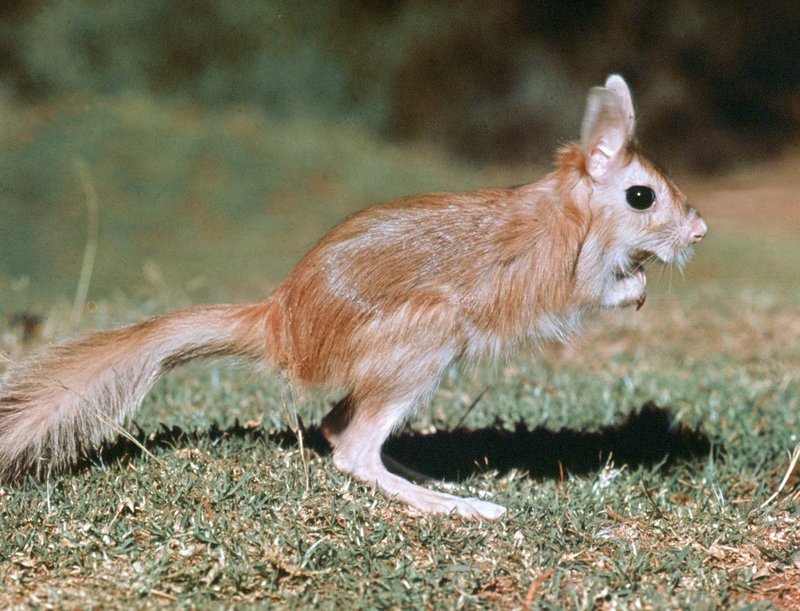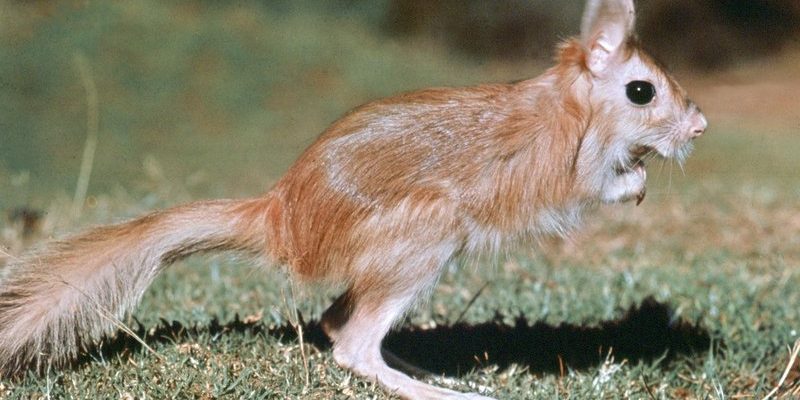
When you picture a rabbit, you might not immediately think of a creature that can leap like a pro. Enter the Springhare! This fascinating little animal, often found in southern Africa, has some pretty unique features that set it apart from its more commonly recognized furry counterparts. With its long legs and powerful hindquarters, the Springhare embodies agility. Imagine a small kangaroo mixed with a rabbit, and you’ll have a good idea of what this curious critter is all about.
Springhares are nocturnal, meaning they come alive at night to forage for food and dig burrows. They are social animals, often seen hopping around in small groups. If you happen to be in the right place at the right time, you might catch a glimpse of their playful antics under the moonlight. It’s like watching a mini circus in the wild! So, let’s dig deeper into what makes this animal so special, from its habitat to its diet and more.
Physical Characteristics
Springhares boast several characteristics that make them stand out. First off, they have an elongated body covered in soft fur that can range from a light brown to a deeper gray shade. Their most notable feature is their long hind legs, which allow them to jump impressive distances. You might say they’re the Olympic athletes of the animal kingdom! With these powerful limbs, a Springhare can leap up to 3 meters (around 10 feet) in a single bound, which is quite the sight to behold.
They have large ears that help them pick up sounds of predators, enabling them to stay one step ahead in the wild. Additionally, their small front legs are used for digging, allowing them to create burrows where they can rest and escape from danger. And let’s not forget those big, expressive eyes! These help the Springhare see in low-light conditions, making them well-equipped for their nocturnal lifestyle.
Table of Key Facts
| Scientific Name: | Pedetes capensis |
| Size: | About 35-45 cm (14-18 inches) long |
| Weight: | Approximately 2-3 kg (4.5-6.5 lbs) |
| Habitat: | Sandy, open areas in southern Africa |
| Diet: | Herbivorous; feeds on grasses and roots |
| Speed: | Can run up to 30 km/h (18.6 mph) |
| Lifespan: | 5-10 years in the wild |
Habitat and Distribution
You might be curious about where Springhares call home. These intriguing creatures prefer sandy, open areas like savannas and grasslands, particularly in countries like South Africa, Namibia, and Botswana. They dig extensive burrow systems that provide shelter and protection from predators. Think of their burrows as cozy underground apartments—complete with multiple rooms and escape routes!
The environment these animals thrive in is crucial. Springhares are well adapted to the dry, arid landscapes, where food can be scarce at times. Their burrow systems not only provide safety but also help them stay cool during the hot days. It’s like having a built-in air conditioner! If the weather takes a turn, they can retreat underground until conditions improve.
Diet and Foraging Behavior
When it comes to what they eat, Springhares are herbivores. Their diet primarily consists of grasses, roots, and seeds, which they forage at night. Imagine a midnight snack, but instead of chips or ice cream, they’re munching on tasty plant matter. They have a unique ability to sniff out nutritious roots and dig them up with their strong front legs.
Their foraging behavior is quite fascinating. They often graze in open areas, keeping an eye out for predators like snakes and birds of prey. They’re savvy eaters, nibbling on different plants depending on the season. This adaptability helps them thrive in changing environments. Plus, their nocturnal nature reduces the risk of becoming dinner for hungry carnivores!
Social Structure and Behavior
Another interesting aspect of Springhares is their social behavior. These animals are typically found alone or in small groups, often consisting of a few individuals. They communicate with each other using various sounds, like soft squeaks or grunts. This social interaction not only strengthens their bonds but also aids in warning others of potential dangers. Think of them as having their own little language!
During the day, you’ll find them resting in their burrows to conserve energy for their night activities. When evening falls, they emerge to forage and explore. It’s an active life in the moonlight! Their playful behavior is evident during these outings, as they often chase one another and engage in what looks like a game of tag. It’s heartwarming to witness their lively interactions under the stars.
Predators and Threats
In the wild, Springhares face various threats from predators. Animals like hawks, snakes, and foxes are always on the lookout for a quick meal. Their large ears and keen eyesight help them detect danger, allowing them to make a swift escape at a moment’s notice. Think about how a rabbit freezes when it senses a threat; Springhares have that same instinct, but with the added ability to leap away quickly!
Human activity also poses a significant threat to their populations. Habitat loss due to agriculture and urban development can make it challenging for Springhares to find suitable living spaces. Additionally, they can be hunted for their meat in certain regions. Conservation efforts are crucial to ensure these remarkable animals continue to thrive in their natural habitats.
Reproduction and Life Cycle
Springhares have a unique reproductive cycle. Mating typically occurs in the warmer months, and after a gestation period of about 70 days, the female gives birth to one or two young. These little ones are born fully furred and with their eyes open, ready to take on the world. It’s like they come with a built-in survival kit!
After the pups are born, they stay with their mother for several months. During this time, they learn essential skills like foraging and escaping predators. Eventually, the young Springhares become independent, leaving their mother’s side to establish their own territories. It’s all part of the circle of life in the wild.
Springhare Conservation Status
Currently, Springhares are not considered endangered, but they still face challenges. Their populations can fluctuate based on environmental conditions and human impacts. While they’re fairly adaptable, ongoing habitat destruction poses a real threat. It’s crucial for local communities and conservation organizations to work together to protect these unique animals and their habitats.
Awareness and education play essential roles in conservation efforts. By learning about Springhares and their behaviors, we can appreciate their role in the ecosystem and advocate for their protection. Just as we enjoy watching animals in nature, we must also ensure their environments are preserved for future generations to experience.
FAQ
What do Springhares eat?
Springhares primarily eat grasses, roots, and seeds. They are herbivorous and forage at night for food, using their strong front legs to dig up nutritious roots. Their diet can vary depending on the season, as they adapt to what’s available in their environment.
Are Springhares social animals?
Yes, Springhares tend to be social animals, often seen in small groups. They communicate through sounds like squeaks or grunts, which helps them alert each other to predators. While they spend time together, they can also be solitary, depending on food availability and environmental conditions.
How fast can a Springhare run?
Springhares are surprisingly quick and can reach speeds of up to 30 km/h (18.6 mph). Their long hind legs give them the ability to take impressive leaps, making them agile escape artists when faced with danger.
What is the lifespan of a Springhare?
In the wild, Springhares typically live between 5 to 10 years. Their lifespan can be affected by factors such as predation, environmental conditions, and access to food. In captivity, they could potentially live longer if provided with good care.
Where do Springhares prefer to live?
Springhares thrive in sandy, open areas like savannas and grasslands in southern Africa. They dig burrows in these environments, which provide shelter and protection from predators, as well as a place to stay cool during the day.
Do Springhares have any natural predators?
Yes, Springhares face predation from various animals, including hawks, snakes, and foxes. Their large ears and acute vision help them detect threats, allowing them to escape quickly when danger is near.
How do Springhares reproduce?
Springhares typically mate in warmer months, and after about 70 days of gestation, females give birth to one or two young. The pups are born fully furred and with their eyes open, which helps them adapt quickly to life outside the burrow.
What conservation efforts exist for Springhares?
While Springhares are not currently endangered, they face threats from habitat loss and hunting. Conservation efforts focus on protecting their habitats and raising awareness about their importance in the ecosystem. Collaboration between local communities and conservation organizations is key to ensuring their survival.
Are Springhares good pets?
Springhares are wild animals and not naturally suited for domestication. While they may seem adorable, they have specific habitat and dietary needs that are challenging to provide in a home setting. Additionally, they require a lot of space to roam and dig, which makes them less than ideal as pets.

